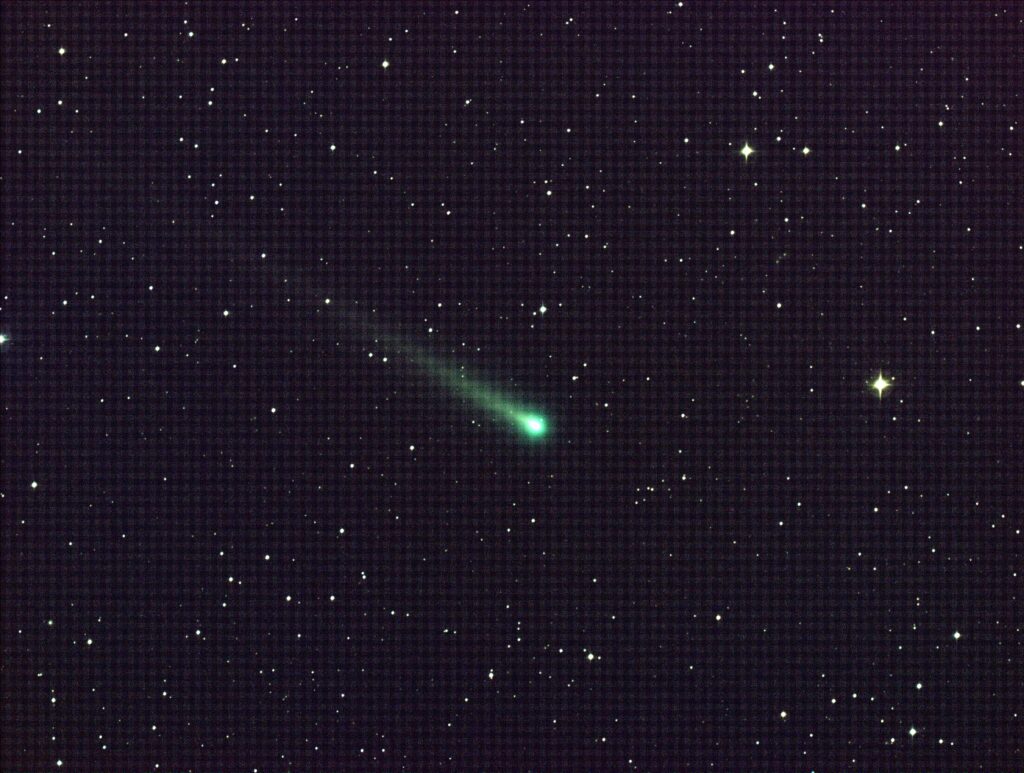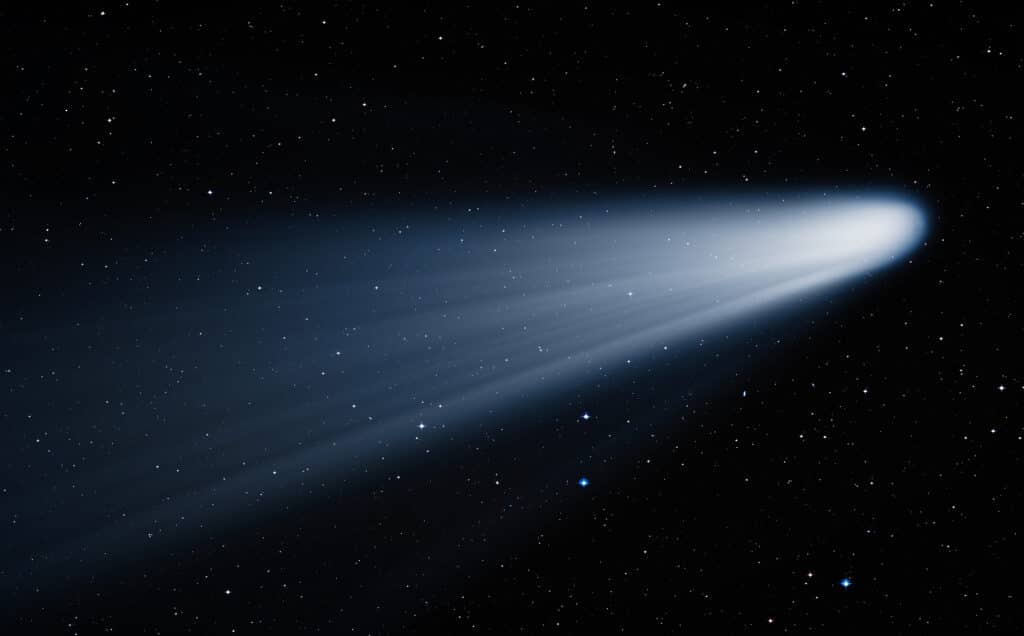Could comets deliver the building blocks of life to alien worlds? Researchers from the University of Cambridge believe so. In a recent study, published in the journal Proceedings of the Royal Society A Mathematical Physical and Engineering Sciences, Cambridge scientists explored the tantalizing possibility that comets, those icy wanderers of the solar system, could be the delivery service for life’s ingredients on distant exoplanets.
Comets are known to harbor a rich inventory of organic compounds, including amino acids and the prebiotic feedstock molecule hydrogen cyanide (HCN). However, for these precious molecules to survive the journey from a comet’s surface to a planet, the impact velocity needs to be just right. Too fast, and the molecules will be destroyed; too slow, and they may never reach the planet’s surface.
Using both analytical models and numerical simulations, researchers investigated how different planetary system architectures and stellar types could influence the impact velocities of comets. They considered systems with Earth-like planets orbiting in the habitable zone — that sweet spot around a star where liquid water could exist on a planet’s surface.
The results showed that the minimum impact velocity is always lower for planets orbiting Sun-like stars compared to those orbiting smaller, cooler M-dwarf stars. This is good news for the prospects of cometary delivery in systems similar to our own. Researchers found that the lowest velocity impacts occur onto planets in tightly packed systems around more massive stars, which could allow for the intact delivery of complex organic molecules.

“We’re learning more about the atmospheres of exoplanets all the time, so we wanted to see if there are planets where complex molecules could also be delivered by comets,” says study first author Richard Anslow, from Cambridge’s Institute of Astronomy, in a media release. “It’s possible that the molecules that led to life on Earth came from comets, so the same could be true for planets elsewhere in the galaxy.”
However, the situation is more challenging for planets orbiting M-dwarf stars, which are the most common type of star in our galaxy. In these systems, the impact velocities are highly sensitive to the arrangement of the planets. In some cases, the survival of complex prebiotic molecules may be impossible due to the high speeds involved.
The study also revealed that planets around M-dwarf stars are subjected to significantly more high-velocity impacts compared to those orbiting Sun-like stars. These impacts could pose unique challenges for the emergence and evolution of life on these worlds, potentially disrupting the delicate chemistry needed for life to take hold.
“We wanted to test our theories on planets that are similar to our own, as Earth is currently our only example of a planet that supports life,” notes Anslow. “What kinds of comets, traveling at what kinds of speed, could deliver intact prebiotic molecules?”
What does this mean for the search for life beyond Earth? Researchers suggest that if cometary delivery is indeed a key factor in the origins of life, we might expect to find biosignatures — indicators of past or present life — more frequently on certain types of exoplanets.
Specifically, they predict that biosignatures could be correlated with low-mass planets (which have lower escape velocities and thus lower impact speeds), planets in tightly packed systems, and those orbiting higher-mass stars. On the flip side, a lack of such correlations would imply that cometary delivery might not be as crucial for kick-starting life as we thought.
This study is just one piece of a much larger puzzle. The delivery of prebiotic molecules is only the first step in the long and complex journey towards the emergence of life. Factors like a planet’s atmosphere, its geological activity, and the presence of liquid water all play critical roles in determining a world’s habitability.
Nonetheless, this research provides valuable insights into the potential cosmic pathways for life’s building blocks. As we continue to discover and characterize exoplanets by the thousands, studies like this will help guide our search for extraterrestrial life and shed light on the age-old question of our place in the universe.
“It’s exciting that we can start identifying the type of systems we can use to test different origin scenarios,” explains Anslow. “It’s a different way to look at the great work that’s already been done on Earth. What molecular pathways led to the enormous variety of life we see around us? Are there other planets where the same pathways exist? It’s an exciting time, being able to combine advances in astronomy and chemistry to study some of the most fundamental questions of all.”
In the coming years, next-generation telescopes like the James Webb Space Telescope will allow us to probe the atmospheres of distant worlds in unprecedented detail, searching for hints of biological activity. With each new discovery, we move closer to answering one of humanity’s most profound questions: are we alone?












